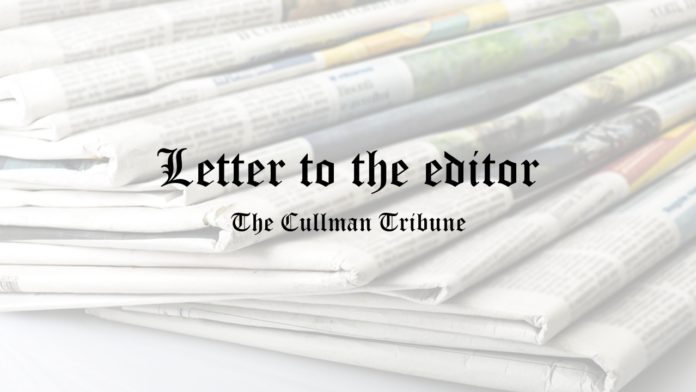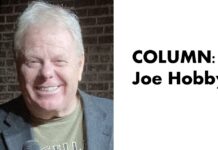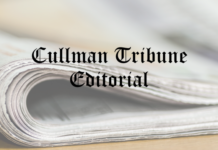September 11, 2001 – Sarasota, Florida: It was a beautiful day as I stepped out of a bungalow at a tennis resort where President Bush and his traveling team, including Secretary of Education Rod Paige and I, had stayed overnight. As Chief of Staff at the U.S. Department of Education, I had flown with the President on Air Force One to Florida the day before to make appearances at schools as part of the effort to generate support for the passage of the President’s No Child Left Behind education reform bill. Our job that morning, September 11, was to visit Emma Booker Elementary School in Sarasota, Florida, talk to the children about the importance of reading, and talk to the Congress and the nation about the need to enact federal education reforms.
The furthest thing from my mind that morning was a terrorist attack. I was not thinking at all about the Top Secret security briefing Secretary Paige and I had received at the White House a few months earlier, when the secret “Continuity of Government” plan, the “COG” as it was known, was explained to us. When I received that briefing, in the basement of the White House, about what our nation would do in the event of a massive attack, where the President’s cabinet members would assemble, how the government would continue to operate, I remember thinking clearly “this will never happen.”
All of us traveling with the President that day had been instructed to place our luggage outside the doors of the bungalows very early on the morning of September 11. The Secret Service would inspect all the luggage before it was loaded into vehicles and taken to the Sarasota Airport to be loaded onto Air Force One for the scheduled return trip to Washington that morning. As officials picked up the luggage, I headed down to the motorcade lineup to wait with Secretary Paige.
The Secretary and I expected to ride together that morning several cars behind President Bush, but just before we were to leave for the school, the President called for Secretary Paige to join him in the Presidential limousine. I climbed into a vehicle five or six cars behind the President with Sandy Kress, the President’s in-house education adviser. As the motorcade rolled toward the school, Sandy and I talked about what we needed to do that day and about the prospects for the passage of No Child Left Behind. I looked out the windows of the motorcade and saw hundreds and hundreds of people lined up along the roadway to greet the President, most welcoming him with signs and applause, some protesting his presence.
As we arrived at the school and exited the car, we noticed the President and Secretary Paige being moved very quickly into the school. As Sandy and I walked up the sidewalk to go into the school, someone said something I couldn’t make out. Then Sandy turned to me and said, “Did you hear what he said? A plane has crashed into the World Trade Center.”
I was stunned. My first thought was that a small plane had accidentally crashed into one of the buildings. My immediate instincts were about the effects on our news event in Florida – and how what I assumed was a small plane crash would take up much of the media’s attention that day at a time when we really needed to have the American people and the Congress focus on the importance of improving education.
The President, Secretary Paige, Chief of Staff Andy Card and others went to a classroom where the President was to read to students. Sandy Kress and I and others went into a separate area where the President was to address a larger group of students and the media. I made my way over to a television in the room and watched it on and off as we prepared for the start of what was to be the main event in that room.
And that’s when it happened, the moment that changed the world: we saw the reports immediately that a second plane had crashed into the World Trade Center.
All of us in the President’s group knew right away the awful truth – America was under attack. I grabbed my cell phone and immediately called my wife Molly, who, with our son Lane, was in Alabama visiting my parents on their way to moving to Washington, DC to join me as I served in the young administration. I told Molly: “Turn on the TV. We’re under attack. I’m fine.”
For me at that point it was all instinct. I frantically tried to reach my office at the Department of Education by phone. The cell phone service was already very spotty but the early version of the Blackberry that I was carrying worked. I emailed with my assistant, Cheri Arnott, at the Department of Education, and was told that the White House was frantically trying to get in touch with me. Cheri said the White House wanted me to get Secretary Paige prepared to stay at the school and finish up the event for President Bush so that he could leave immediately after making initial remarks to the nation about the attacks.
I ran outside the building and saw President Bush and Secretary Paige coming toward my position. The President walked right past me, within five feet, as he went to the library area where we had gathered for him to address the nation for the first time about the attacks.
As Secretary Paige reached me I grabbed him and said, “Sir, I need your speech material. I’ve got to rewrite it quickly. You have to stay here and finish this event for the President, and he has to leave because of what’s happened.” I’ll never forget the look on Secretary Paige’s face as he said, “What’s happened? I don’t know.” In the immediate chaos, apparently no one had told the Secretary of Education what had just happened. So it fell to me to explain: “Mr. Secretary, the nation has been attacked by terrorists. They have flown two planes into the World Trade Center. There may be thousands dead.”
The Secretary was immediately calm. That was one of Rod Paige’s greatest strengths – an absolutely unshakeable focus on forging ahead and getting things done. Whether that came from his years as a football coach or as superintendent of the Houston school district, seventh largest in the country, I don’t know. I told him that day, “You must have ice water in your veins.” He was as stoic as anyone could be.
I stood about 10 to 15 feet to the President’s right as he announced to the audience, to audible gasps, that America had been attacked, and promised that terrorism against the United States “will not stand.” Immediately after he finished the remarks, the President again walked right past me and exited the building. We had been directed to stay behind at the school and finish the event and do anything we could to comfort those who had just heard the news. Secretary Paige stepped to the podium and gave his newly rewritten remarks to finish up the event.
Secretary Paige and I exited the building moments later. The President was gone – already en route to the Sarasota Airport. My first instinct was that we had to get protection for Secretary Paige because in the federal government, American-born cabinet secretaries are all in line of succession to the presidency. No one knew at that point if the entire nation was under attack, if our leaders were being targeted. I only had my instincts – that the Secretary of Education – I believe at the time he was 11th in line of succession to the presidency – had to be protected.
So I ran to the assembled local police, told them who Secretary Paige was, and told them we needed to protect him immediately in the event that he too was targeted as part of a broader attack. The police responded immediately, hurrying Secretary Paige into a squad car for a trip to the Sarasota Airport to try to catch up with President Bush and Air Force One before they left. The Secretary and I rode together to the airport as the police officer turned up the commercial radio station so we could hear news about the attacks.
When we arrived at the Sarasota Airport we learned that Air Force One was gone, and Secretary Paige and I were stranded in Sarasota. The federal government immediately dispatched a special military aide to join the Secretary at the airport as a special information envoy to keep him informed of developments. I stuck close by the Secretary and the military aide to keep up with what was going on.
I had always heard about the phenomena known as the fog of war – how in war time situations mistakes are made, information can be wrong, decisions difficult. In those next moments, I witnessed that first hand.
We learned very shortly afterward that the Pentagon had been attacked. Then shortly afterwards the military aide told us of reports that a plane had crashed on the National Mall in Washington. That turned out, of course, to be false.
And then most startling: a few minutes later the military aide informed the Secretary of reports that the U.S. government had shot down a passenger plane in Pennsylvania. That scenario seemed entirely plausible to us at the time – the nation was under attack by multiple airliners, so it made sense the government might have to shoot one down if it was considered a threat. We learned later, of course, that United Flight 93 had actually crashed after the heroic actions of passengers who were determined to stop the terrorists before they could crash another plane into a building.
Reports already were beginning to come out that other buildings and individuals might become targets in this attack, even Air Force One itself. When I heard that, I froze: my two high-school age daughters, in class in their hometown in Alabama, knew that I was scheduled to fly on Air Force One back to Washington with the President that day. If they heard that Air Force One might be targeted, that might be terrified. With a few frantic tries, I was able to get through on the cell phone to their school, where I talked with their mother and asked her to go see the girls in their classroom and let them know I was okay, and that I was NOT on Air Force One.
The government soon made the unprecedented decision to ground all air traffic across the nation. Secretary Paige and I were left there at the Sarasota Airport with the military aide and no way back to Washington. All I knew was that I had responsibility for a very important leader of the government, and so his safety continued to be my number one priority.
As we watched the news unfold on the television sets in the airport, I stayed in contact with my office by Blackberry. Other leaders of the Department of Education — I believe Deputy Secretary Bill Hansen, a great and solid leader in his own right — were in charge at the building. I remember telling my assistant Cheri I thought they should all get out of the building, but of course, they were way ahead of me. The Secretary was concerned about the safety of those 5,000 people in the Department of Education.
Soon, Secret Service agents arrived from Tampa to put Secretary Paige under protective cover. The secret Continuity of Government operation we had been briefed about months earlier was working. The agents put us in vehicles and drove us back to Tampa to an office building for safety. They did a great job of protecting the Secretary and keeping him informed. As we drove to Tampa, the Secretary was very quiet, closing his eyes and listening closely to the radio. I wish I knew what he was thinking, but I couldn’t even imagine.
After we were briefed by the Secret Service, the agents took us to a hotel where Secretary Paige was put into a room and placed under 24-hour guard. I had another job to do at that point: Air Force One had left that morning with the Secretary’s luggage and mine, and we had no clothes! I borrowed a van from the hotel and drove to a K-Mart in Tampa to buy clothes for the two of us. I walked around the K-Mart picking out clothes in an almost surreal scene: people were trying to go about normal day-to-day activities but families whispered quietly to one another, and shoppers moved around with a look that could only be described as shock. I felt the same way.
That night I peeked outside my hotel room door a couple of times and looked down the hall to see the Secret Service agent sitting dutifully right outside Secretary Paige’s door. The Secret Service agents did their job that day, just like they always do. It was a comfort to see the agent out there.
After a sleepless night, the next morning we got word from the White House that a military transport plane, a C-130, was at the Sarasota Airport and that we might be able to catch a ride back to Quantico, Virginia (Reagan National Airport was closed, of course) that day if we hurried. We took that chance because the Secretary badly wanted to get back to Washington to help the President and to check on the people who worked for him at the Department of Education.
The Secret Service drove us back to Sarasota and we made it in time to board the plane. We had arrived in Florida on the best airplane in the world, Air Force One. We were going back on a loud, rattling troop transport plane. And that was just fine with us.
As we flew back to the Washington area that day, I saw something I had never seen before; the skies were completely devoid of air traffic. We were the only plane in the sky that I could see. There was still so much uncertainty at that point, I remember clearly thinking “I sure hope someone knows that we’re up here in the sky and that we’re supposed to be up here.” It was a nervous flight back, but when we landed in Quantico, we were glad to be back.
The whole world changed that day. Nearly 3,000 people were killed by a terrorist organization that still targets us and targets freedom around the world today, eight years later. I worry that too many Americans have nearly forgotten what happened that day.
I will never forget what I saw and felt that day. And I hope most Americans never forget it. For our safety, we can’t afford to forget.
Terry Abbott
Director of Communications
Alabama Bureau of Pardons and Paroles
























